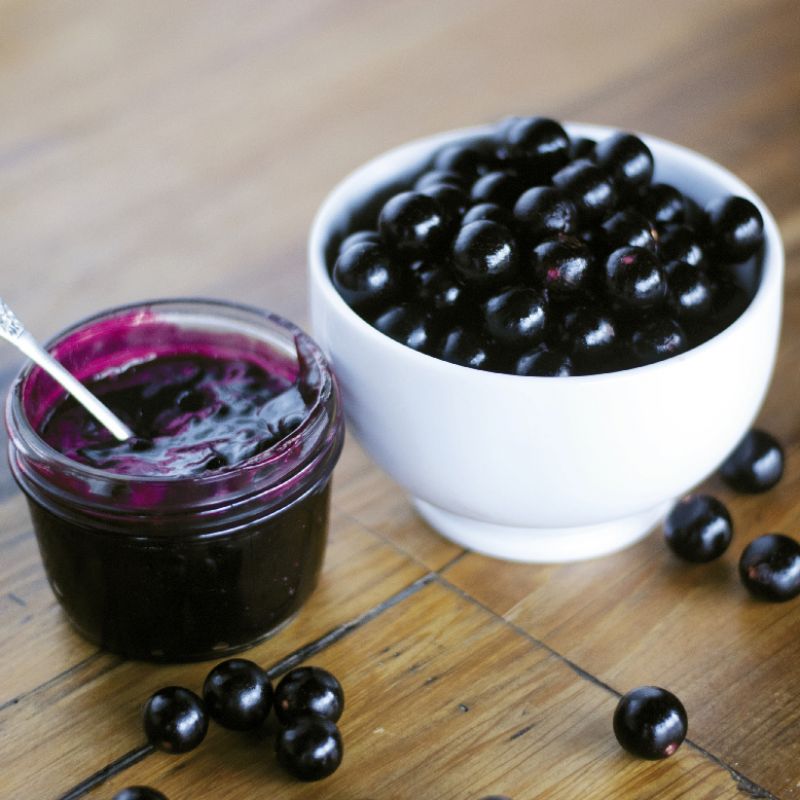
❶ Wash 5 pounds of firm muscadines. (Any variety can be used, but Conrad likes the Noble grape for its color, sweetness, and small seeds.) Simmer the grapes in a pot with 3 1/2 cups of water, stirring occasionally, until they soften and give up their juice, about an hour.
❷ Empty the pot through a coarse-mesh strainer into a large bowl, then use a spoon to force the grapes through the sieve. Discard any remaining solids. Pour the reserved liquid through a fine-mesh strainer into another bowl, again discarding the solids.
❸ Put the reserved juice (about 3 cups), into a pot along with 3 1/2 ounces of lemon juice and 1 cup of sugar. Bring it to a boil and cook until the sugar has dissolved. In a separate bowl, mix 3 tablespoons of pectin (any store-bought kind will do) and 3 tablespoons of sugar.
❹ Slowly whisk the pectin blend into the juice. With the pot over high heat, stir often while the pectin activates and the mixture thickens, 5 to 10 minutes. The jelly should be thick but still fluid (it will set as it cools). Grapes’ natural pectin content varies, notes Conrad, so if the jelly is too watery, add another tablespoon of the 1:1 pectin/sugar mix and cook for 5 more minutes. Repeat until it gels.
❺ Season lightly with salt to fill out the flavor.
❻ Transfer the jelly to two pint-sized containers and cool. Covered and refrigerated, it will last a month once opened. If you prefer shelf-stable jelly, seal the hot mixture in two jars using a water-bath technique.